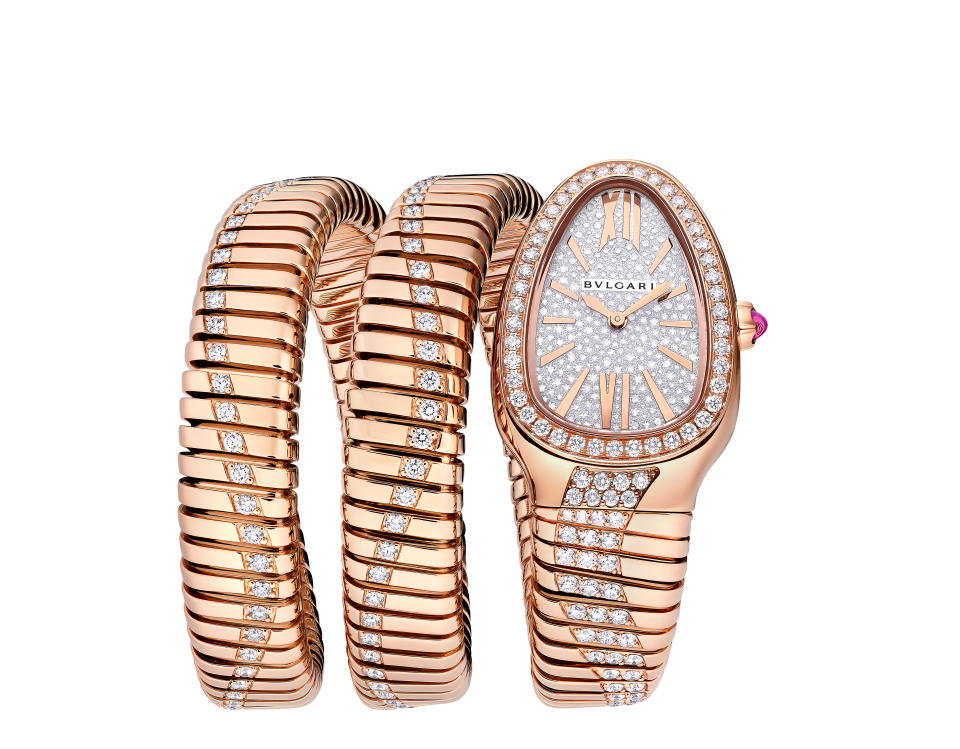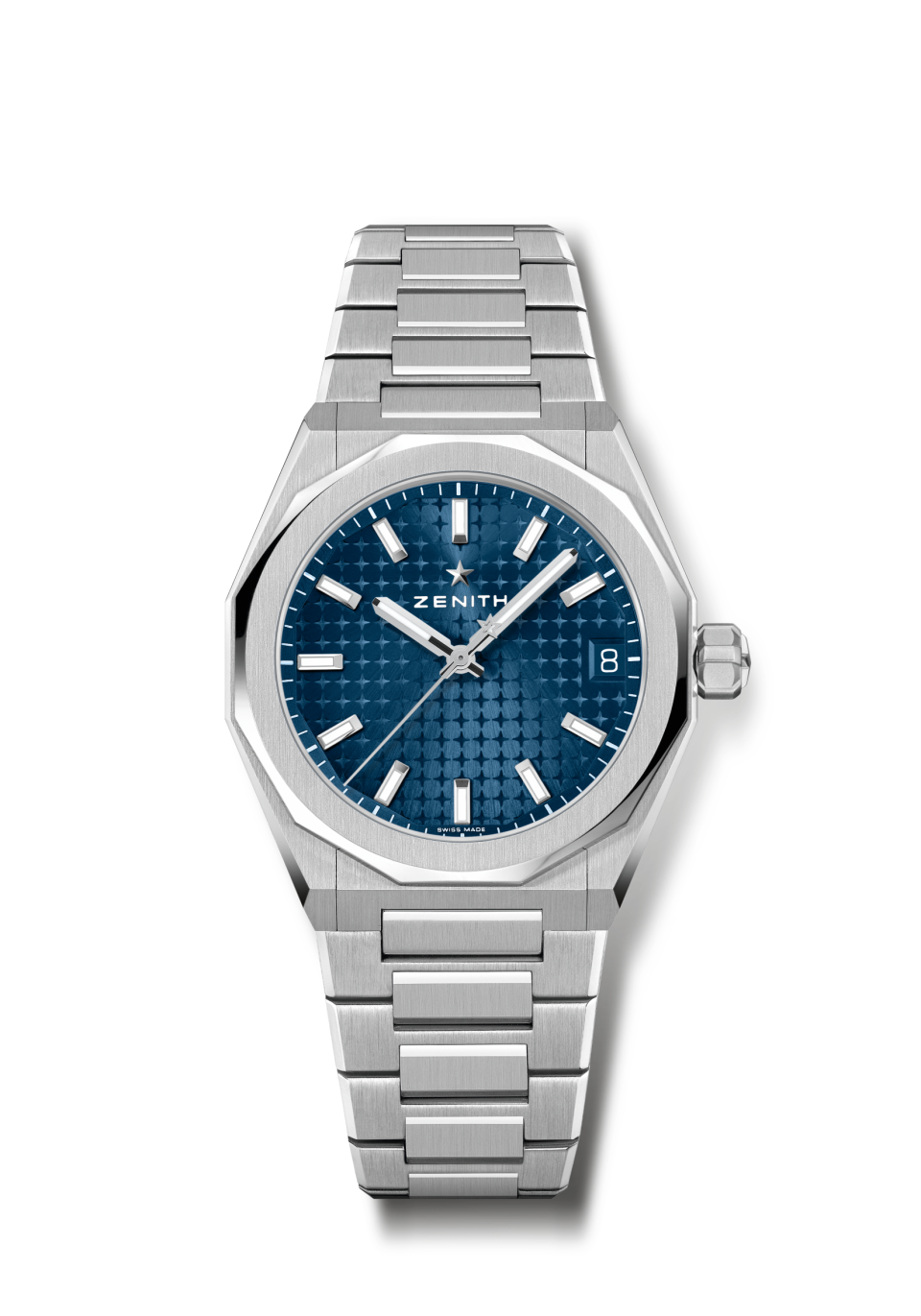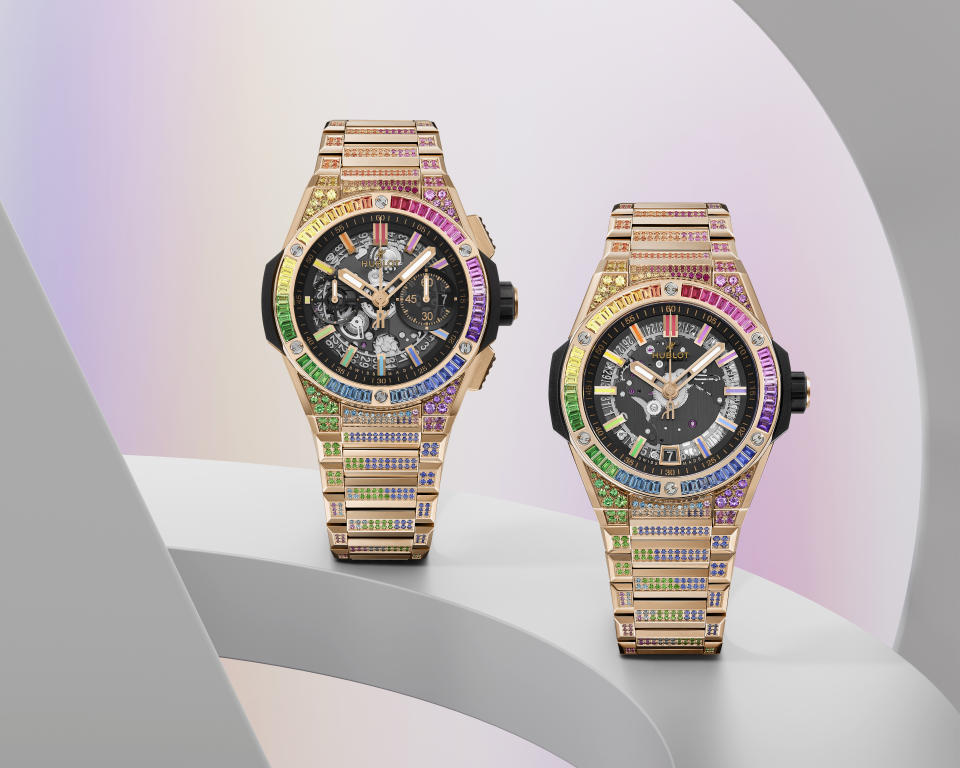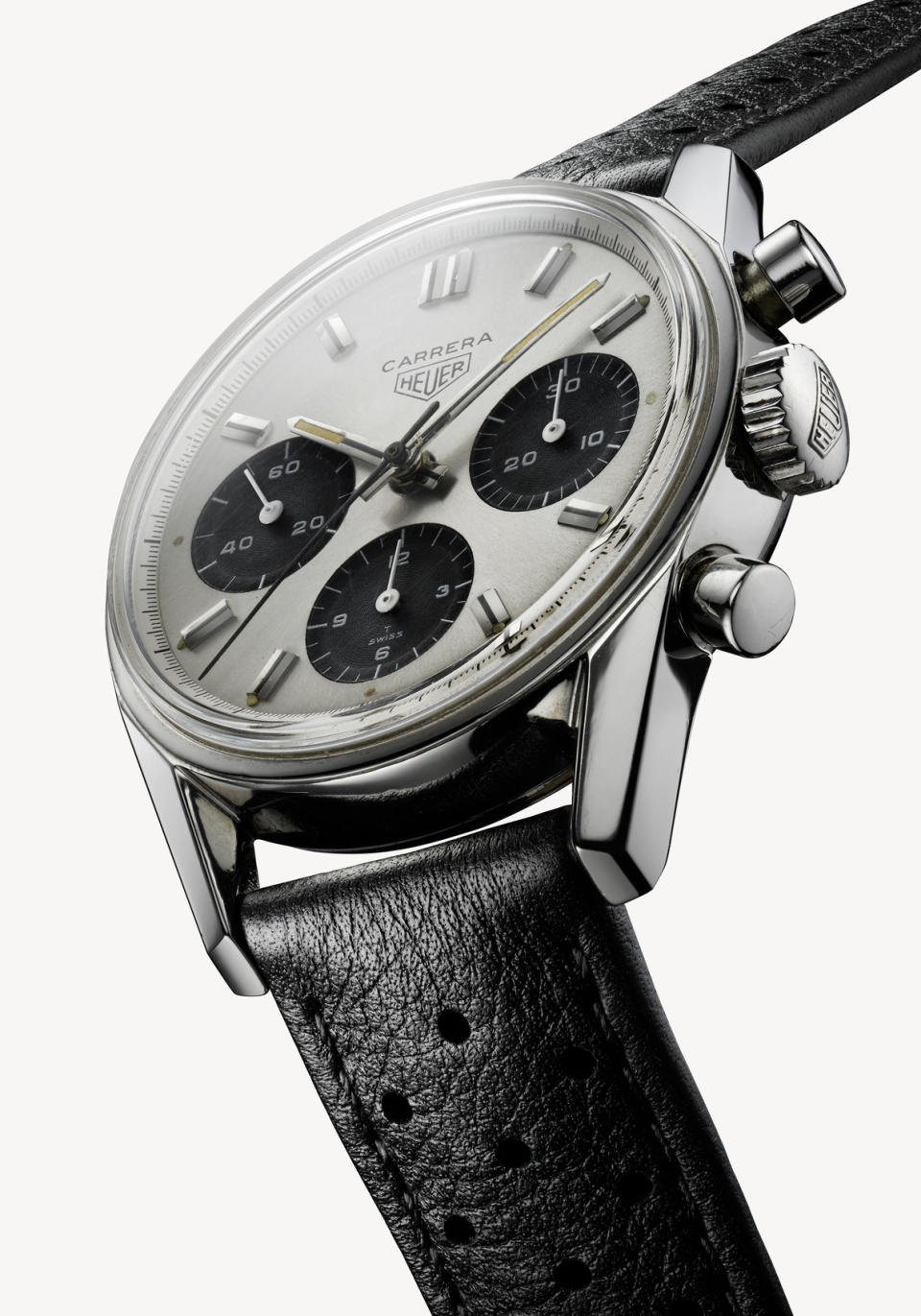Fourth LVMH Watch Week Returns to Physical in Singapore and New York

PARIS — LVMH Mo?t Hennessy Louis Vuitton kicked off 2023 for the luxury watch industry on Tuesday with the fourth edition of its LVMH Watch Week.
For the first time since the onset of the COVID-19 pandemic, the latest timepieces from Bulgari, Hublot, Zenith and Tag Heuer were unveiled through a physical showcase in Singapore.
More from WWD
The edition will also be extended with an additional two days in New York, on Jan. 18 and 19, focusing on U.S. and Latin America-based press and retailers.
In a statement, Stéphane Bianchi, chairman and chief executive officer of the LVMH watches and jewelry division, expressed satisfaction at this return to physical events and lauded the edition’s “reinvented icons and exceptional pieces” that were a testament to “singular high-quality craftsmanship and vision of watchmaking, two ingredients that feed the growth” of the group’s brands.
“It’s great to be back to physical after three years of [COVID-19],” concurred Ricardo Guadalupe, Hublot’s CEO.
Bringing the showcase to Singapore also shines a spotlight on the importance of the Southeast Asian market, one of the strongest markets in 2022 for watchmakers, said Tag Heuer CEO Frédéric Arnault.
With the exception of China’s pandemic-related turbulence, the rest of Asia had been “very dynamic, with [growth] trends similar or higher than the U.S.,” he said.
The region also has consumers with “a level of sophistication that we cannot really see in other parts of the world” and a keen interest in high-end goods, such as watches and high jewelry, Guadalupe said.
Getting physical face time with each destination’s press, buyers and clients is “so much stronger than just an ad page or just a couple of good articles on the web,” confirmed Zenith’s CEO Julien Tornare.
“I believe there is a very interesting move toward developing local regional events and probably more turn toward the public, not only toward our business partners,” said Antoine Pin, managing director of Bulgari’s watch division.
Having multiple rendezvous throughout the year also made for stronger content around the products, added Pin, calling each event “a stage” fit “to concentrate the message on one specific theme.”
Coming off a complex but nonetheless effervescent 2022 that saw Swiss watch exports, a key luxury industry indicator, rise 11.9 percent during the first 11 months of 2022 year-on-year, LVMH’s watchmaking executives remained cautiously optimistic about the coming months.
“We have to be clear that what we see in the [watchmaking] industry is a very paradoxical situation,” said the Bulgari executive, pointing out the conjoined significant rise in value and decrease in units.
As a whole, 2023 will be a year of consolidation where leveraging opportunities will require “talking about what is right for the moment” as uncertainty remains a reality, according to Pin.
Further complicating the outlook is the run-on effect of inflation-led increases across the supply chain and labor costs, as well as growing demand for high-end, high-added-value products.
“There will be a real economic complexity to maintain prices that are acceptable by customers,” even affluent ones, he continued.
Beyond flexibility and adaptability to rapidly changing market conditions, he cited a strong brand identity as keys to continuing success.
For the Roman house, that identity in Singapore took the form of jewelry watches, such as the Serpenti Tubogas Infinity, which is the first time Bulgari has set the flexible bracelet with gems.

Drawing a parallel between watches and jewelry as items meant as personal statements or vectors to communicate on one’s identity, he outlined the reinforcement of iconic product lines and the development of limited editions tailored for specific markets as two development directions.
“They are opposite but [following] one doesn’t [block] the other,” Pin noted.
That said, Bulgari will not be solely playing safe. It will continue to increase its production capacity, with average growth rates since 2020 of around 20 percent, and autonomy by maintaining a very high level of vertical integration.
With “good and strong” brand momentum and “a big margin for development ahead,” Zenith’s Tornare was feeling that 2023 would be an overall good year ahead of the Singapore showcase.
Nonetheless, a “more complicated” situation in the last two months of 2022 and an expected tougher-than-usual start to 2023 would see Zenith “managing [its] resources quarter by quarter,” he said.
Take production, for example. While demand continues to be two- to three-times larger than the monthly production capacity of the brand, which produces between 24,000 and 25,000 watches a year, Tornare said the brand would step up in more sedate increments, to the tune of “10, 15, 20 percent step-by?step.”
The Zenith executive also noted the growing impatience of the watch consumer, who is no longer content with the previous SIHH and Baselworld tempo of first-quarter announcements and months-long waits for launches since the health crisis began.
In this context, the January timing of LVMH Watch Week may play an interesting role. Along with March’s Watches and Wonders fair, it had kickstarted “the right rhythm” to the year by quickening the cycle of launches and commercial releases, according to Tornare.
“It’s getting closer to the fashion industry,” he said, noting the feeling of immediacy in delivery these presentations created have been beneficial for the brand.
In Singapore, Zenith showed new additions to its in-demand Defy line, including a skeleton version of its Skyline model and a new 36-mm size.

Tornare expects that model to be equally appealing to male consumers eschewing the 40-plus-mm sizes and female collectors, “new clients [who] hate being put in a category where women like small, dressy, diamonds and quartz” and are interested in technical movements.
While Hublot is starting the year with a bang, or rather five Big Bang iterations, as well as the Classic Fusion Original, a reinterpretation of the brand’s 1980 initial model, CEO Guadalupe was likewise cautious.
Especially on the back of “quite an incredible year” in 2022, the executive is expecting “realistic growth,” perhaps “more single-digit” for this year, pointing to the long shadow cast by Russia’s invasion of Ukraine in February 2022 and a general softness in the luxury market seen in the last months as possible sources of uncertainty.
That said, with China’s Jan. 8 reopening, “acceleration could be faster than we thought,” despite potential localized lockdowns or store closures due to upticks in coronavirus cases.
Hublot also seemed to be hedging its bets by offering nonidentical twins or triplets for its Singapore launches, such as its rainbow-hued gem-set Big Bang Integrated King Gold Rainbow and its Time Only sibling, or the three-size variation on the Classic Fusion original.

Hublot will continue to develop its retail network, adding four boutiques in the U.S., including Boston and San Francisco, and eight to 10 new stand-alone stores globally.
Store projects in China are also back on the table, as Guadalupe felt that the brand had “room to grow” with 13 existing boutiques in the country on a landscape that includes 25 important shopping malls.
Noting that the watch industry as a whole is still recuperating from supply-chain and personnel issues generated by the pandemic, he revealed that Hublot would start building a new manufacturing facility in the spring, to be completed by 2025.
Though this will increase the number of units mechanically, Guadalupe highlighted an intention of “growing more on the value side than the quantity side,” with a focus on innovation and highly technical materials such as Saxem, a sapphire aluminum oxide usually used for satellites.

Tag Heuer likewise put a spotlight on the trifecta of heritage, technical expertise and design innovation for its Singapore releases, all with the idea that “you buy a design, a model, a story.”
Holding the corner for heritage are the Monza Flyback Chronometer but above all, the Carrera Chronograph celebrating the line’s 60th anniversary, which features the last outing of its “Glassbox” watch case — its successor will make its debut at Watches and Wonders.
Though it comes at a moment where the pre-owned and collectible watches markets are growing strongly in volume and price, this is no backward glancing homage, according to Arnault, who said being “current while remaining faithful to the vision of our predecessors” was the path to continued growth in future years.
Innovation came in the shape of a titanium iteration of its solar-powered quartz Aquaracer and 42-mm versions of its Connected Calibre E4 digital watch, with enhanced golfing features.
Both also segued into the strong unisex trend emerging from the market, a direction that Arnault intends on pursuing with further releases in the year, with an eye toward balancing out Tag Heuer’s more masculine mien in the future.
Hot on the heels of a “historic year” in 2022, the challenge for the brand will be to keep “a healthy tension” between market demand and production capabilities. The construction of two new buildings, meant to bolster capacity to produce cases and dials in-house, is under way.
That said, the key to sustaining desirability will be to stay as close as possible but “never [fully] serve the demand,” Arnault said.